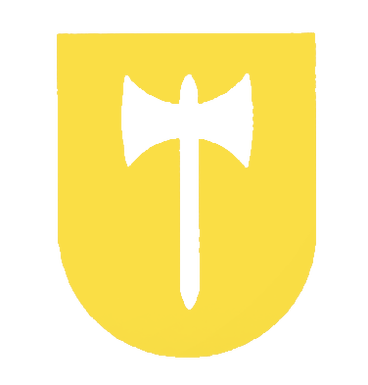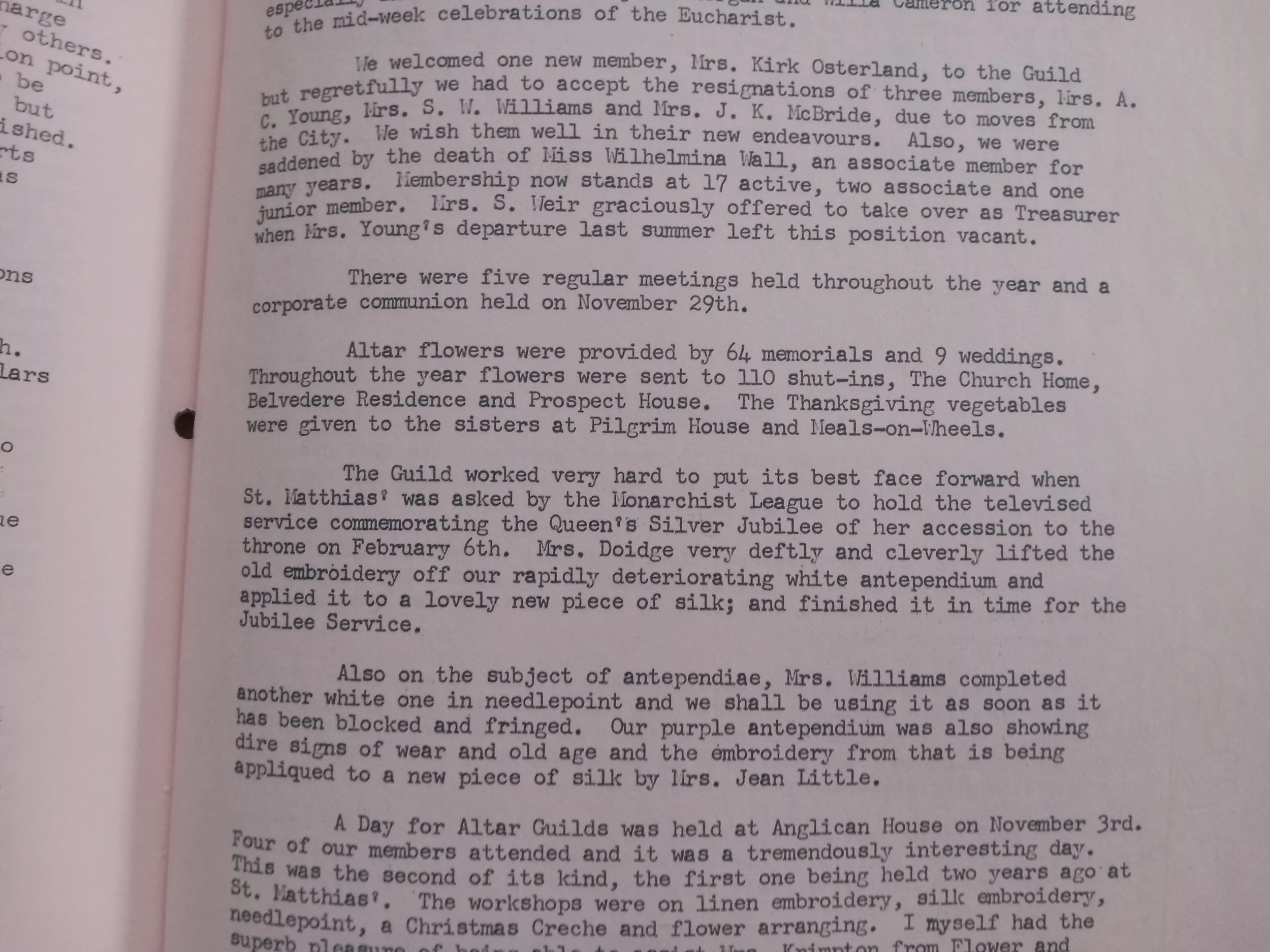April 30th: St. Matthias’ and the Monarchy
St. Matthias’ was officially founded as a mission of St. George’s, Place du Canada, in 1873, which means our community is 150 this year! For the next 12 months, we’ll be diving into the archives to shine the spotlight on particularly interesting parts of our history. This is the first of a multi-part series on anniversary services at St. Matthias’. This week, we cover the first service in the new building and the celebration of the building’s 50th anniversary.
The service bulletin for a 1953 service celebrating Elizabeth II’s coronation – in advance!
As Defender of the Faith and Supreme Governor of the Church of England, Queen Victoria was the highest authority to which the new congregation of St. Matthias’ owed allegiance. In fact, if St. Matthias’ had been founded about twenty years earlier, it would have had an even more direct line to the monarchy, since the Church of England in the Dominion of Canada was only granted autonomy as an ecclesiastical province in the 1850s. Next week, when Charles III is coronated, he will take up the mantle of Defender and Governor of Anglicanism almost everywhere it manifests itself. Even though the Anglican Church of Canada has considered itself distinct from the Church of England since the 1950s, Charles will still be the most powerful person in our church, unless Parliament says otherwise. But St. Matthias’ has some more direct monarchical – and monarchist! – history
On Trinity Sunday 1953, all Anglican churches around the world were instructed to host services celebrating the upcoming coronation of Elizabeth II. To ensure that everyone was celebrating the same thing, as by then the Anglican Church of Canada was using its own prayerbook, the Queen’s own publishing house produced a hefty little booklet outlining the appropriate order for Morning Prayer, Eucharist, and Evening Prayer, as well as suggestions for suitable hymns. Our archives don’t say which services St. Matthias’ hosted, although we can hazard a guess at all three.
We do, however, have a bulletin for a Service of Thanksgiving celebrating 10 years of Elizabeth’s reign. It is fascinating to read how Matthians, and presumably other Anglicans on that same Sunday, went through the various steps of the ordination with the kind of ritual remembrance we usually reserve for the Eucharist. As your humble historian has advanced degrees in the study of religion, they cannot help but note how the retracing of Elizabeth’s steps in the three stages of coronation had the effect of deepening her footprints, and thereby reinforcing Elizabeth’s sovereignty over the gathered congregation. In effect, while the Queen never set physical foot in St. Matthias’ (although her sister, Princess Margaret, did attend St. Matthias’ in October 1967), her spiritual presence was very much here.
But after the 10th anniversary of her coronation, the reinscribing of Elizabeth’s power in the church seems to have no longer been performed by St. Matthias’ itself. Instead, we see the appearance in 1977 of the Monarchist League of Canada (Montreal Branch), which had only come into being in 1970. Their choice of St. Matthias’ for Quebec’s televised celebration of the Queen’s Silver Jubilee Celebration is a secret our archives do not contain, but we can hazard a guess that as Quebec’s most prominently Anglophone area, Westmount was a logical destination. Beyond this general guess, though, we do know that there were deep (and sometimes unsavoury) connections between Westmount institutions and the Monarchist League – for which the Chancel Guild rejoiced, as it gave them an opportunity to spruce up some altar linens to better show off the church on television.
The Monarchist League came back at least thrice more; our archives have bulletins from their services in 1978 and 1979, and a regular bulletin from 1981 points to the following Sunday as a Monarchist League service. It is unclear when or why they stopped hosting services here; certainly the League itself continues to have a strong presence in Canadian society and politics. A bill before Parliament this spring would change Charles III’s Canadian titles to eliminate “Defender of the Faith,” and given the Monarchist League’s past political actions, we might expect them to take up arms to defend Charles’ status as Canadian Anglicanism’s most prominent authority.





























